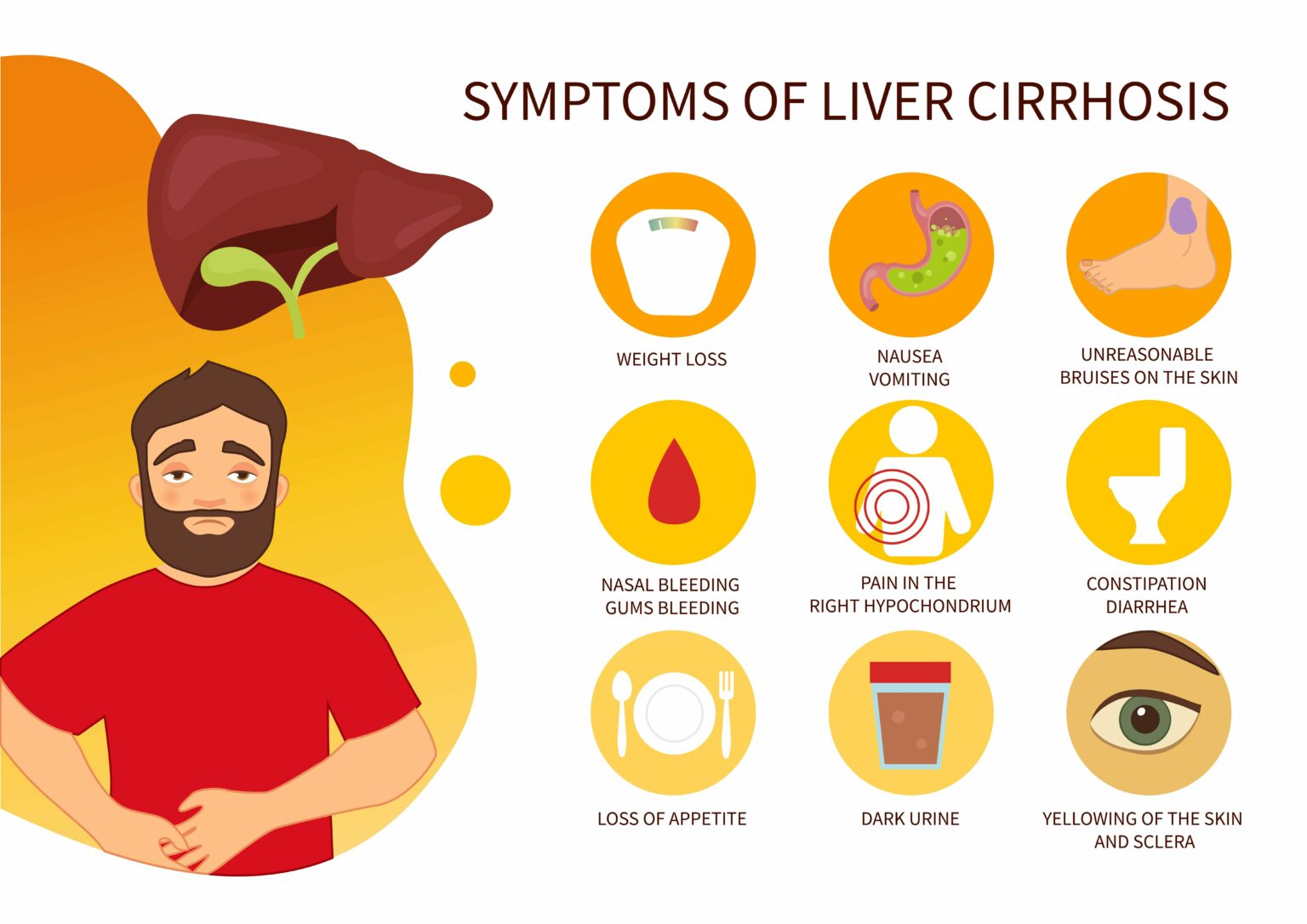Liver cirrhosis is a severe condition that occurs when scar tissue forms on the liver, often as a result of liver diseases such as hepatitis or chronic alcohol abuse. Timely diagnosis and treatment are crucial for managing liver cirrhosis. Here are five common symptoms that can indicate the presence of this condition:
1. Jaundice
The yellowing of the skin or eyes is one of the most noticeable signs of liver cirrhosis. This occurs because the liver is no longer able to efficiently process bilirubin, a yellow pigment that forms when red blood cells break down. When the liver is damaged, bilirubin builds up in the body, leading to jaundice. If you notice a yellowish tint in your skin, nails, or the whites of your eyes, it is imperative to seek medical advice promptly. Early detection and treatment can prevent further liver damage and address any underlying conditions contributing to the jaundice.
2. Loss of Appetite
A significant decrease in appetite is a common symptom among individuals with liver cirrhosis. The liver plays a vital role in digestion and metabolism, and when it is damaged, these processes can be disrupted, leading to a loss of appetite. Patients may find themselves eating less and losing weight unintentionally. If you find yourself losing your appetite without a clear reason, it is advisable to have your liver function assessed. Early intervention can help identify the underlying cause and allow for appropriate treatment to restore your appetite and overall health.
3. Chronic Fatigue
Persistent fatigue and weakness are hallmark symptoms of liver cirrhosis. The liver is essential for detoxifying the body, producing proteins, and storing energy. When it is damaged, its ability to perform these functions is impaired, leading to chronic fatigue. Patients often feel extremely tired even after minimal physical activity and may struggle to maintain their usual levels of energy and productivity. If you consistently feel unusually tired, consulting a healthcare professional is essential. Proper diagnosis and treatment can help manage your symptoms and improve your quality of life.
4. Swelling and Itching
Swelling and itching of the body, particularly in the legs, ankles, and abdomen, can be indicative of liver cirrhosis. This occurs because the liver is unable to produce enough albumin, a protein that helps keep fluid in the bloodstream. As a result, fluid can leak into surrounding tissues, causing swelling (edema). Additionally, bile salts may accumulate in the skin due to impaired bile flow, leading to itching. Ignoring these symptoms for an extended period can lead to more severe complications. Seeking medical attention early can help manage the condition more effectively and alleviate discomfort.
5. Nausea and Vomiting
Liver cirrhosis can hinder proper digestion, leading to frequent nausea and vomiting. The liver produces bile, which aids in the digestion of fats. When the liver is damaged, bile production and flow can be disrupted, resulting in digestive issues. Patients may experience a constant feeling of nausea, vomiting, and difficulty with food intake, leading to malnutrition and weight loss. If you experience frequent nausea or difficulty with food intake, it is crucial to consult a healthcare expert to evaluate your liver health. Early intervention can help manage these symptoms and improve your overall digestive health.
Recognizing these symptoms early and seeking expert medical advice can significantly improve the management and treatment of liver cirrhosis. Regular check-ups and timely interventions are key to mitigating the progression of this serious condition.
6. Conclusion
Early detection of liver cirrhosis is important. If you experience jaundice, appetite loss, fatigue, swelling, itching, or nausea, seek medical advice promptly. Regular check-ups and timely intervention can significantly improve outcomes and maintain liver health.
Note- If you have any health-related concerns, please call us at +91-9058577992 to receive free consultation from our experienced doctors. Thank you.

